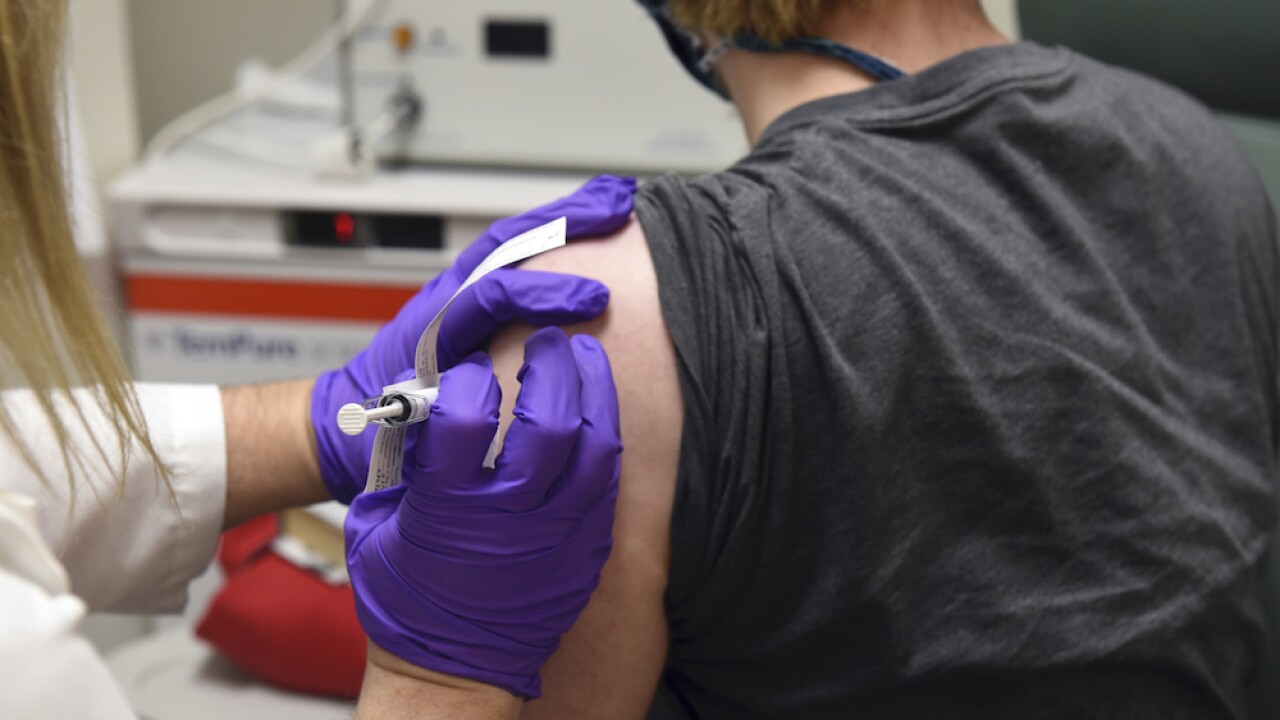KANSAS CITY, Mo. — CDC data has consistently listed Missouri and Kansas near the bottom of the list in terms of vaccines administered.
It's why the 41 Action News I-Team decided to go in-depth on the numbers, reviewing each state's data.
Missouri's dashboard says 7.4% of people have received at least one dose, while the data for Kansas is 6.8%. Those figures place both in the bottom third of states, according to CDC data.
For example, neighboring states Arkansas and Colorado both have rates above 8%.
However, the overall vaccination rate isn't the only metric by which states' performances can be measured.
It's also important to look at the percentage of distributed doses that have actually been administered. In other words, how many doses have ended up in arms?
Since both Missouri and Kansas have pointed to problems with the CDC data, we again looked to the state dashboards.
Missouri
In Missouri, about 61% of the distributed doses had been administered as of Thursday afternoon.
That figure includes two things:
- doses given directly to state partners and vaccinators
- doses distributed to pharmacies for the federal long-term care (LTC) facility program
Missouri Gov. Mike Parson has cited the federal program as one reason why the state's overall percentage of administered doses isn't higher.
If those doses, which the state has not controlled, aren't included, then Missouri's rate is actually about 66%.
According to a spokesperson for the Missouri Department of Health and Senior Services, dose estimates for the program were based on 100 percent capacity and a 1 to 1 staff ratio at facilities, meaning not all doses were used.
That's why Governor Parson recently asked CVS and Walgreens to send back 25,000 unused doses to the state for redistribution.
CNN reports at least ten other states have made similar requests for reallocation.
"We found ourselves in a situation where we had more vaccine than we needed- the last thing we would do was ever hold it- and so immediately what we did was get in touch with the states the make sure that we were complaint with their wishes," Walgreen's Chief Medical Officer, Dr. Kevin Ban, told CNN's Chris Cuomo.
In Missouri, a spokesperson for the state health department also pointed to problems thus far with the federal roll out as a reason for the percentage not being closer to 100.
"There will always be some lag present. Shipping 1,000 doses of vaccine logistically looks different than getting 1,000 doses into arms," DHSS communications director Lisa Cox said.
The state has been figuring out allocation on a weekly basis, giving vaccinators little time to plan.
"The new federal administration has communicated publicly their commitment to provide a longer range of supply projections, which will allow everyone to plan more appropriately," Cox said.
Kansas
Across the state line, Kansas clocks in at 60.4% of distributed doses actually administered.
A spokesperson for Kansas Gov. Laura Kelly's office said the state continues to see a reporting gap between how many vaccines have been distributed and how many have been administered.
"We, along with KDHE, local health departments, and healthcare providers remain focused on getting vaccines in communities and in arms," the spokesperson said in a statement. "KDHE has opened several lines of communication with local health departments and healthcare providers to reduce the reporting gap without reducing the capacity to vaccinate Kansans."
That spokesperson did not respond to an inquiry regarding whether or not the federal LTC program is also negatively impacting the state's overall percentage of vaccines administered.
With any data, context is key.
Compared to other states, Kansas and Missouri appear to be in the middle of the pack when it comes to the percentage of distributed doses administered. The national average is 61%.
However, it is hard to pinpoint where exactly Kansas and Missouri fall on the list, as other states could be experiencing CDC reporting lags as well.
Many states are in the 60-70% range on the CDC dashboard, while West Virginia, North Dakota and New Mexico have all administered more than 80 percent of the doses distributed.
One factor listed in West Virginia's success was its decision to opt out of the federal long-term care program, instead creating local networks of pharmacies and pairing them with facilities.
In addition, West Virginia mobilized its National Guard at the start of the vaccination process.





